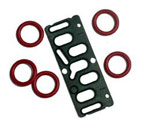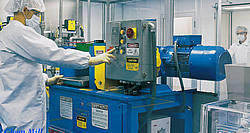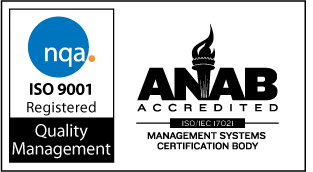
|
7108
S. Alton Way, Unit I |
(303) 758-2728
Home > Elastomers > Elastomer Processing 2
Elastomer
Processing
Part 2

Types of Polymerization Reactions
- 1. Condensation
Polymerization-
yields polymers with repeating units having fewer atoms than the monomers from which they are formed. This reaction generally involves the elimination of small molecules such as H2O or HCl.
- 2. Addition
Polymerization
- 3. Chain
Polymerization/Free Radical Polymerization-
- A. Initiation: formation of free radicals by scission of a single bond (homolysis), or by the transfer of a single electron to or from an ion or molecule (redox).
- B. Propagation: growth of macromolecular structure.
- C. Chain Transfer and Termination: completing the polymerization step.
Types of Chain Polymerization Methods
- Bulk Polymerization-
involves only the monomer and a monomer-soluble initiator. - Solution
Polymerization-
a solvent lowers the viscosity, assisting heat transfer and reducing the likelihood of auto-acceleration. - Suspension
Polymerization-
reaction mixture is suspended as droplets in an inert medium. Polymer particles are produced in the form of beads in the range of 0.1 to 2 mm in diameter. - Emulsion
Polymerization-
the initiator is not soluble in the monomer but soluble only in the aqueous dispersion medium. Polymer is produced in the form of a latex with particles in the range of 0.05 to 1 micron.
Next Topic Elastomer Processing Part 3
We are located in the Denver Technological
Center in a suburb of Denver, Colorado
©1997-2017, Problem Solving Products, Inc.
Website Map | Privacy Statement
| Terms of Use

